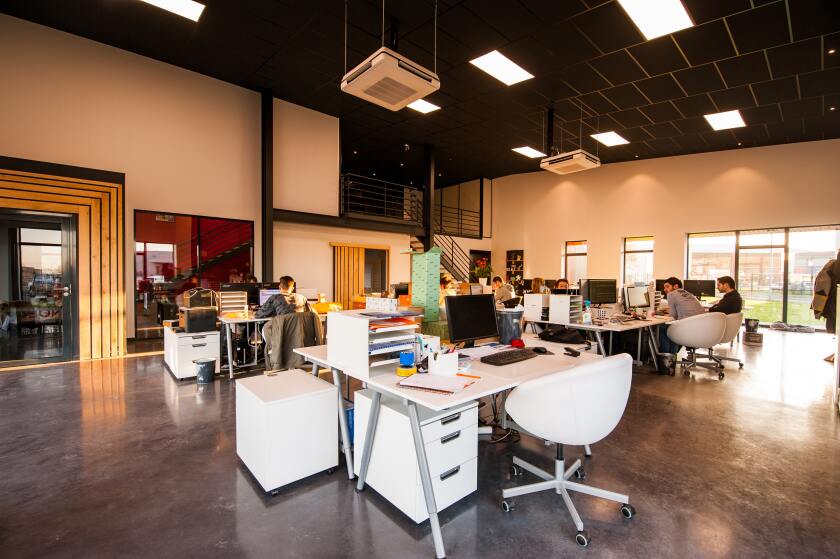Employers are swapping cubicles and commutes for a more flexible, hybrid approach when it comes to returning to the office post-COVID.
While 35% of workplaces do not currently have a firm reopening plan, 68% of employers want workers in the office at least three days per week, when it is safe to do so, according to the Society for Human Resource Management. However, only 22% of organizations said returning to the office was a priority, SHRM found.
Read more: What does work look like in 2021? Workplace experts share their predictions
While employers including Facebook, Slack and other tech companies have committed to a permanent remote model, most employers are looking for solutions that strike a balance between remote and in-person work, says Adam Segal, CEO of Cove, which creates tech-enabled co-working spaces.
“I don't think people are saying, I want to be exclusively at home or I exclusively want to be in the office,” Segal says. “There's this middle ground. So it’s about figuring out what’s right for each company.”
Read more: 5 workplace benefits employees want this year
Cove works with employers to set up communication platforms and scheduling systems. They also help digitize the office by providing desk and conference room reservations and other in-person and virtual amenities.
In a recent interview, Segal shared how employers can navigate a hybrid work model and rethink the office, as well as the potential pitfalls employers may face when executing their return-to-work plans.
What is the top priority for employers as they consider reopening offices?
It’s going to be very rare for a company to say you have to be in the office every day nine to five. People want the ability to have flexibility. Employees want the ability to leverage the convenience of remote work but mix in the office environment. The number one thing is your colleagues. So how can you bring that interaction to the forefront? That doesn’t need to be everyday, because that can get in the way of productivity.
How can employers execute a hybrid work environment and keep workers productive?
Cove is working with companies to figure out their flexible/remote work policy and how they define that moving forward. In terms of when and where you access the office, you can have people all come in at the same time, on specific days or by specific departments. Employers can also decide on core hours in which everyone's online.
Employers should think about the support that can be provided from the technological perspective by digitizing the office, so that employees can reserve a desk or a conference room. Think about the office now as a shared resource that can be better leveraged across every single person.
What are the pros and cons of a hybrid work approach?
This is the personalization of work. Employers are giving more choice and flexibility to each and every individual employee, so that can lead to a bell curve in terms of dealing with different behaviors and different needs and wants. Employers have people on each end of the spectrum. There’s the person who wants to be in the office to be productive and there's the person who's like, “I'm never leaving my house.” So you're really solving for the people in the middle, whose general consensus is that they want to be in the office two to three days a week.
This has created a whole new world of how you think about work. Employees are no longer tied to the nine to five. They’re tied to getting their work done. That’s leading to a lot of behavioral changes that have a big impact on how we think about work. People want flexibility to say, “Just because I work doesn't mean my life stops.”


